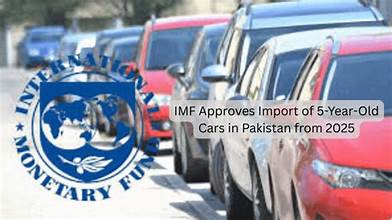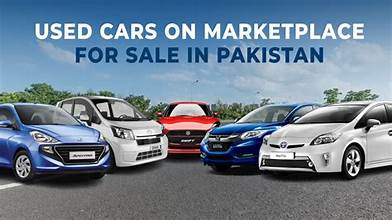For decades, Pakistan’s automobile market has been a source of heated debate among policymakers, consumers, and industry experts. The country’s limited local production capacity, reliance on a few automakers, and high car prices have long restricted access to vehicles for the average citizen. In an attempt to address the growing demand for affordable transportation, the government of Pakistan has recently approved the import of used cars. However, this decision comes with a steep price tag that may reshape the automotive landscape, but not necessarily in favor of middle-class buyers.
The move is designed to provide more options for consumers, reduce dependency on local manufacturers, and increase competition. Yet, high duties, levies, and additional costs attached to used car imports raise concerns about whether this initiative will genuinely benefit the public or simply add another layer of financial burden.
Why Pakistan Turned to Used Car Imports
Pakistan’s automotive industry has often struggled to meet the needs of its growing population. Local manufacturers, including Suzuki, Toyota, and Honda, dominate the market but largely focus on assembling rather than innovating. Their production capacity is insufficient to satisfy the increasing demand, resulting in waiting times that can stretch for months and prices that continue to rise with inflation and currency depreciation.
Moreover, new cars have become increasingly unaffordable. With the rupee weakening against the dollar and interest rates climbing, car financing has become restrictive. Many consumers see used cars as a more practical alternative. Importing used vehicles has therefore been framed as a short-term fix to bridge the demand-supply gap.
The Heavy Price of Importing Used Cars
While the policy sounds promising on paper, the reality is far more complex. The cost of importing used cars into Pakistan is heavily burdened by government-imposed taxes and duties. These include:
- Customs duty
- Regulatory duty
- Additional sales tax
- Income tax
- Withholding tax
In many cases, the cumulative charges can exceed the actual price of the vehicle itself. For instance, a car that might cost $5,000 abroad could end up costing nearly double once all duties are paid. This high cost structure raises doubts about whether the average consumer will truly benefit.

Impact on Consumers
For the middle and lower-middle class, the new import policy may bring limited relief. While it expands the pool of available cars, the high price point makes affordability a continuing challenge. Many families who were hoping that used car imports would provide budget-friendly options may find themselves priced out of the market once again.
Wealthier buyers, however, are likely to benefit. Those who can afford the steep costs may now have access to higher-quality vehicles from abroad, particularly Japanese-used cars, which are often more reliable, fuel-efficient, and better equipped than locally manufactured models.
Effect on Local Auto Industry
One of the major concerns surrounding the import of used cars is its impact on the domestic auto industry. Local manufacturers argue that a surge in imports could reduce their sales, threatening jobs and discouraging investment in the sector. They contend that Pakistan needs to prioritize strengthening local production capacity rather than relying on imports.
On the other hand, consumer rights activists and market reform advocates argue that local carmakers have long enjoyed a monopoly with little incentive to improve quality or reduce prices. The threat of competition, they believe, could push domestic players to innovate, enhance safety standards, and expand their offerings.
Pakistan Allows Used Car Imports with Heavy Cost
The Role of Government Revenue
Another dimension to the decision lies in government revenue. Duties and taxes on imported vehicles contribute significantly to the national exchequer. At a time when Pakistan is grappling with economic instability and seeking to broaden its revenue base, the heavy taxation on used car imports serves as a way to generate funds.
This balancing act—between consumer needs, industry protection, and government revenue—is at the heart of the debate. Policymakers face the challenge of creating an environment that fosters affordability without undermining local industry or cutting off essential revenue streams.
Environmental Concerns
The approval of used car imports also raises questions about environmental impact. Older vehicles often come with higher emissions, posing risks to Pakistan’s already fragile urban air quality. While many imported Japanese cars are hybrid or fuel-efficient, not all imports will meet modern emission standards. Without strict regulatory oversight, the influx of older models could undermine efforts to combat pollution.

Possible Solutions for a Balanced Approach
To make this policy more beneficial for all stakeholders, several steps could be considered:
- Gradual Reduction of Duties: Lowering import taxes over time could make used cars more affordable while giving local automakers time to adapt to competition.
- Incentivizing Local Production: Encouraging joint ventures, offering subsidies for electric vehicles, and supporting local component manufacturing could strengthen the domestic auto industry.
- Stricter Quality Standards: Ensuring only environmentally friendly and mechanically sound vehicles are allowed into the country would reduce pollution and protect consumers.
- Financing Options for Used Cars: Expanding car financing schemes to include imported used vehicles could increase accessibility for middle-income buyers.
- Clear Policy Roadmap: A transparent, long-term automotive policy could provide stability for both consumers and manufacturers.
Conclusion
The decision to allow the import of used cars in Pakistan reflects a recognition of the country’s pressing transportation challenges. However, the steep costs attached to these imports risk sidelining the very consumers the policy aims to support. Without reforms that reduce taxes, strengthen local production, and enforce environmental standards, the policy may ultimately serve as a band-aid rather than a cure.
For now, the import of used cars may offer greater variety and slightly more competition in the market, but affordability remains elusive. True reform will require bold steps to balance consumer needs, industry growth, and environmental sustainability. Until then, the heavy cost of importing used cars will continue to weigh on the hopes of Pakistan’s middle class.



